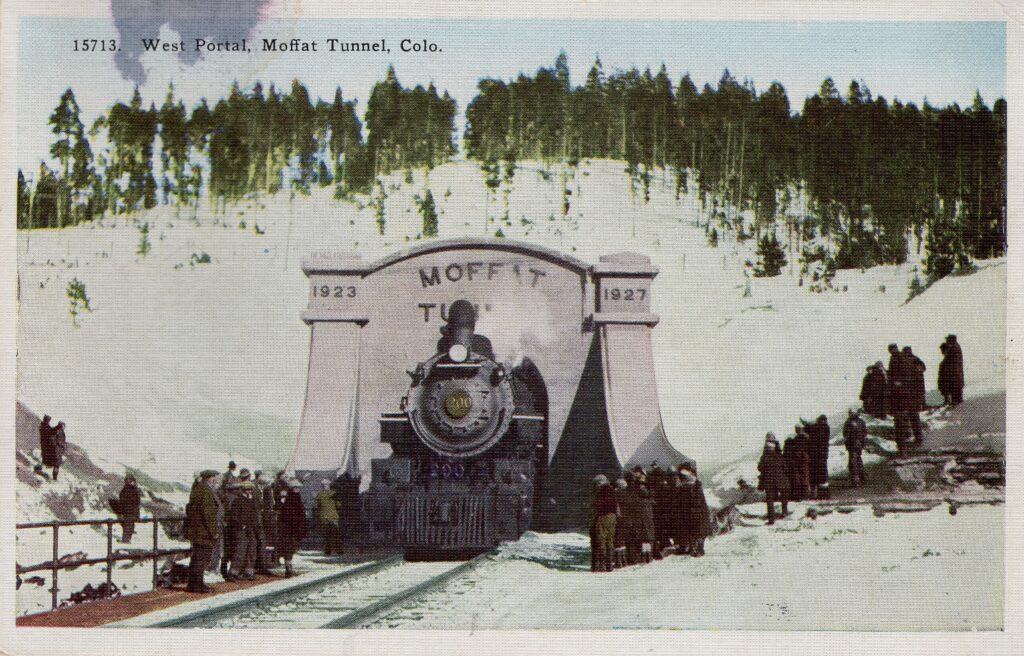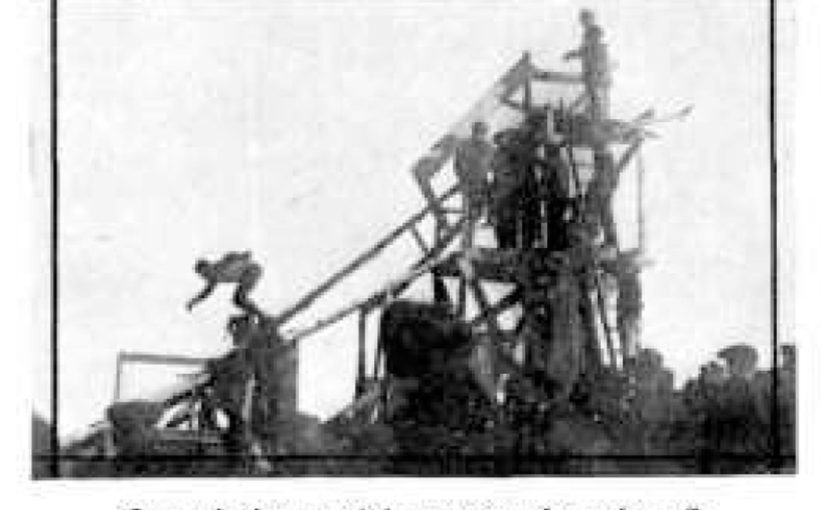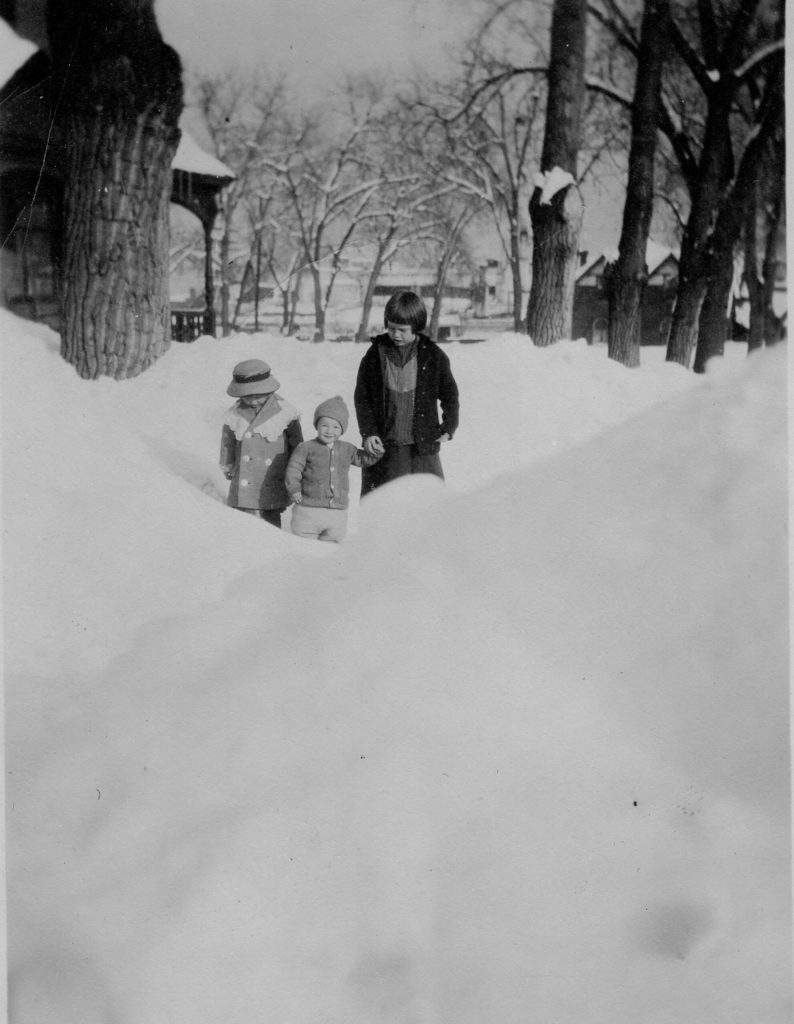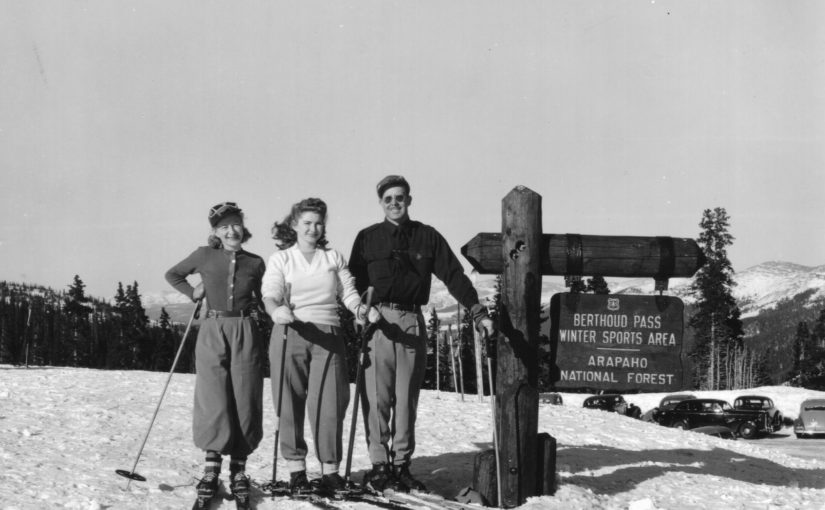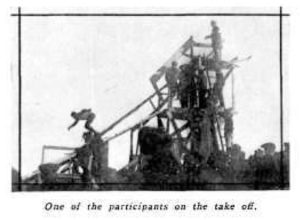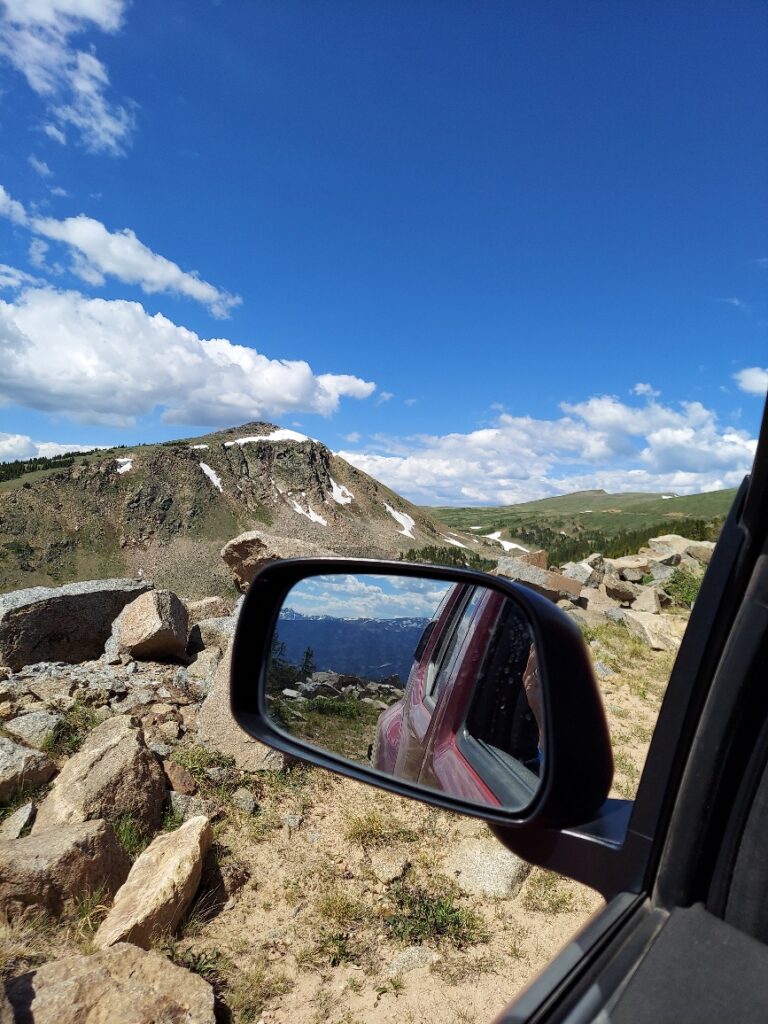
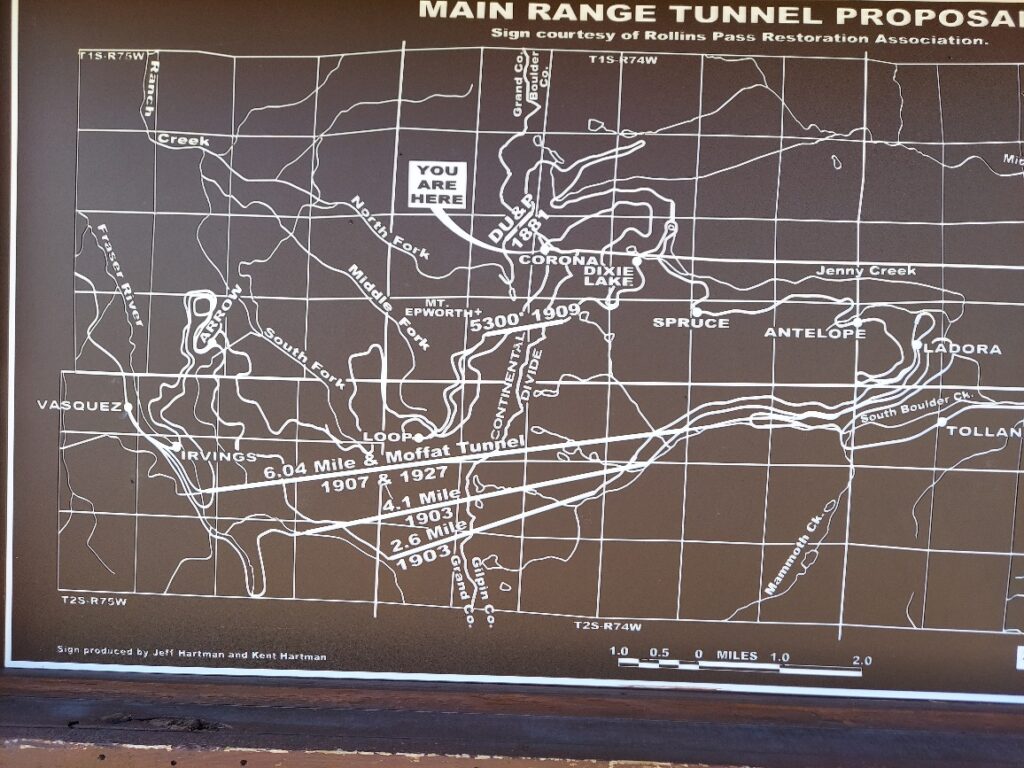
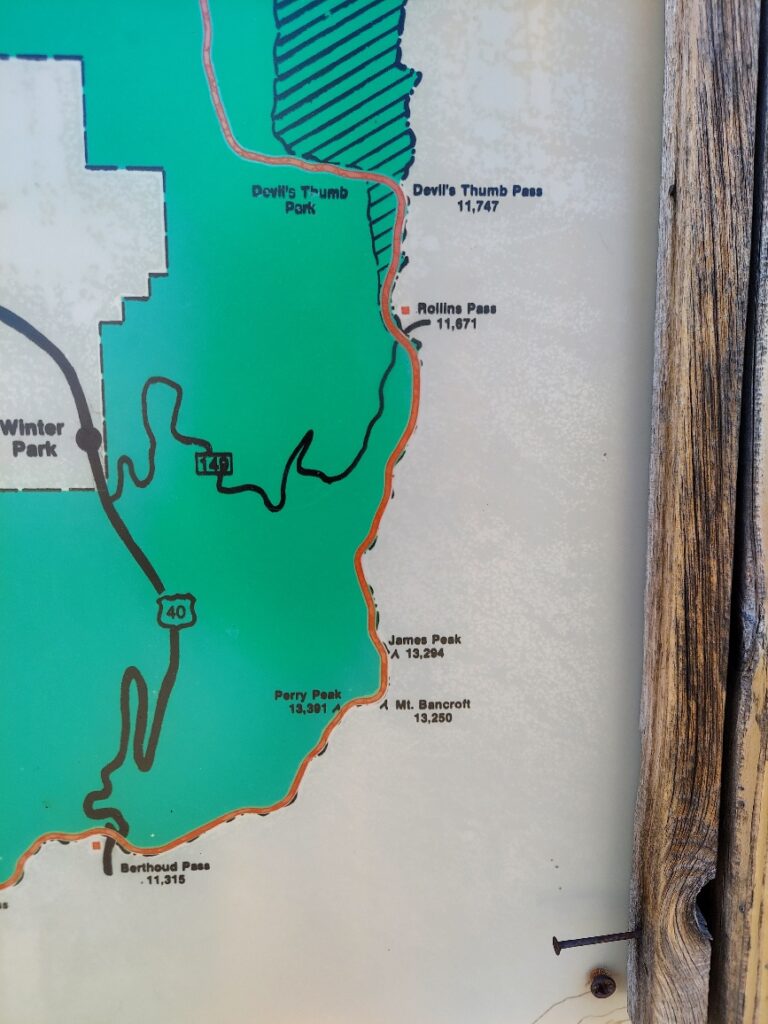
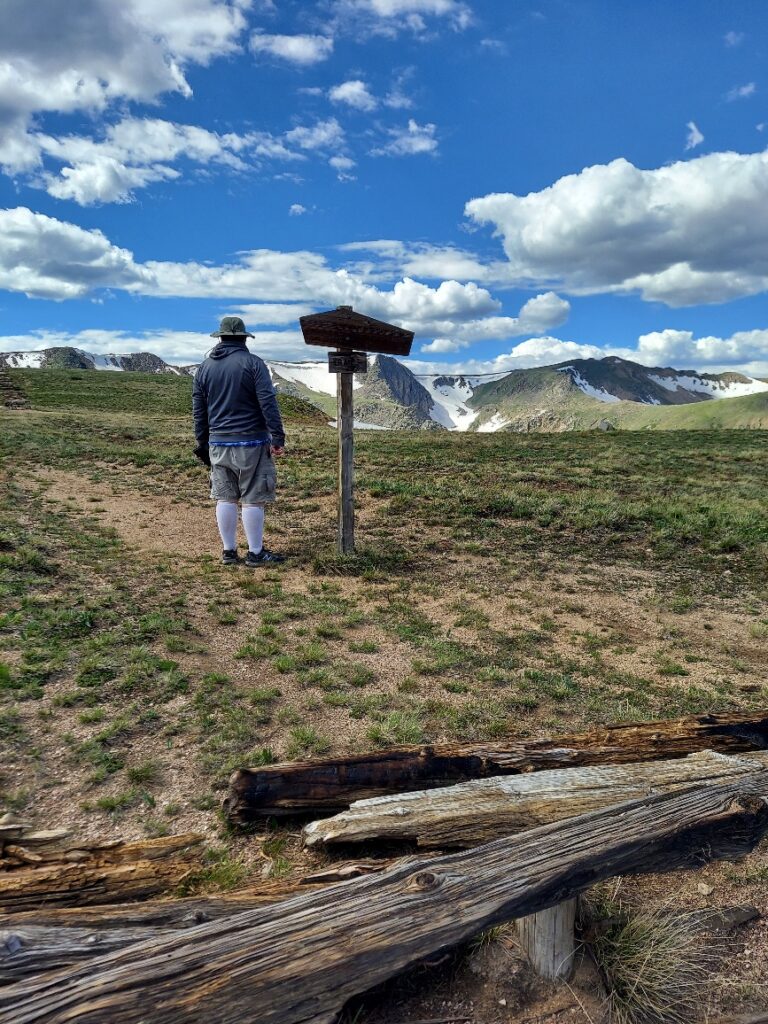
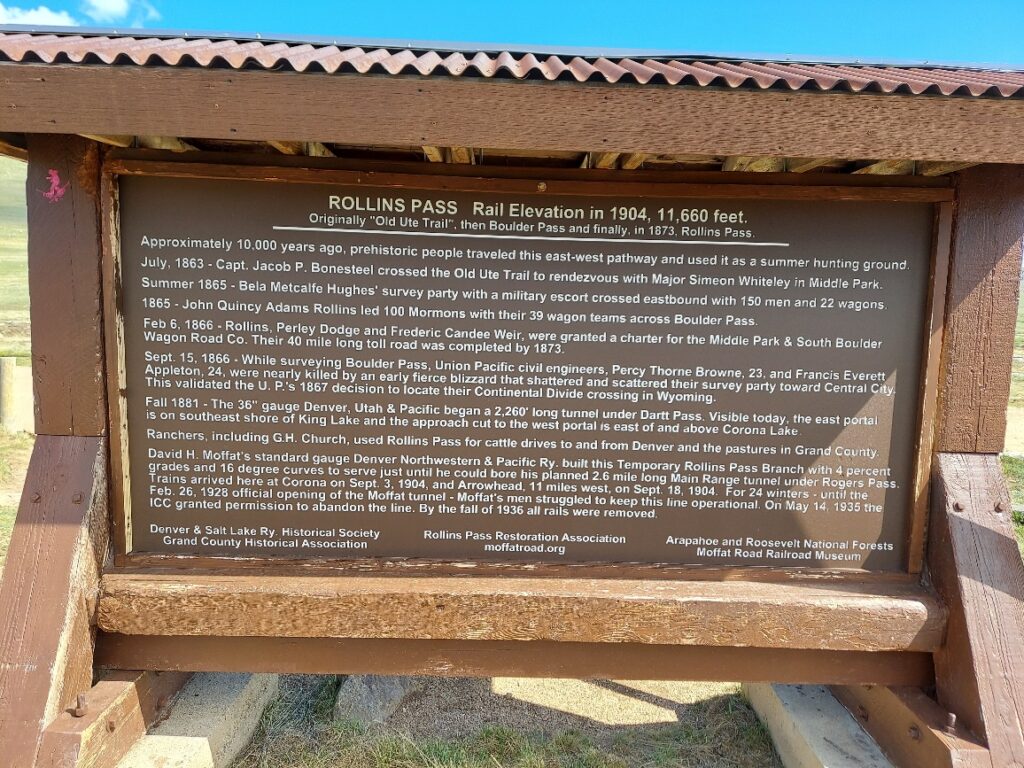
Lost Ski Areas of Colorado’s Front Range and Northern Mountains tells the story of Carl Howelsen and Angell Schmidt riding the train on the Moffat Road to Rollins Pass “where Corona was,” getting off the train, and skiing down to Hot Sulphur Springs to crash the town’s first winter carnival in 1911. They showcased ski jumping there.
We drove the very rough Corona jeep road from Colorado Highway 40 this summer to visit the historic spot and to remember the story and the railroad that carried so many to Hot Sulphur Springs. Later with the creation of the Moffat Tunnel it let them off to ski at West Portal Resorts and the Mary Jane Trail.
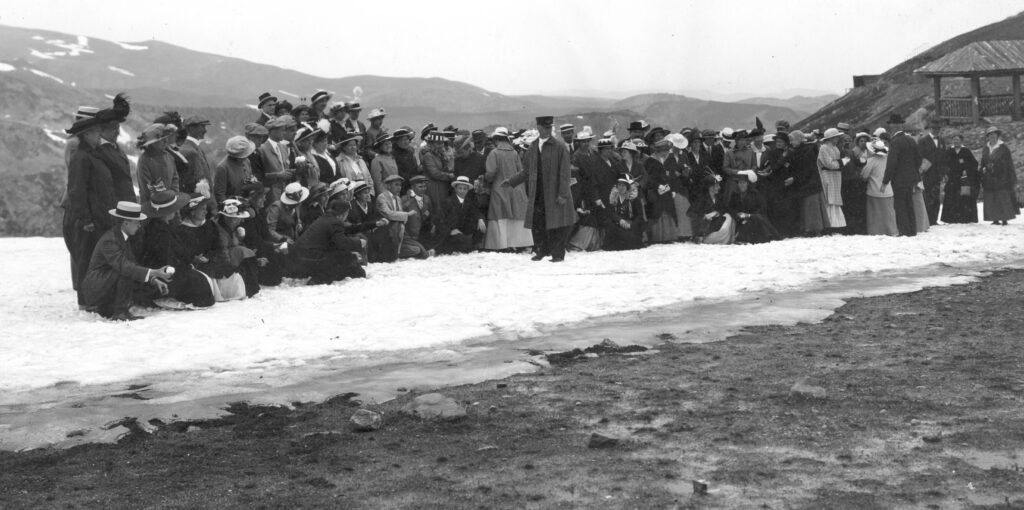
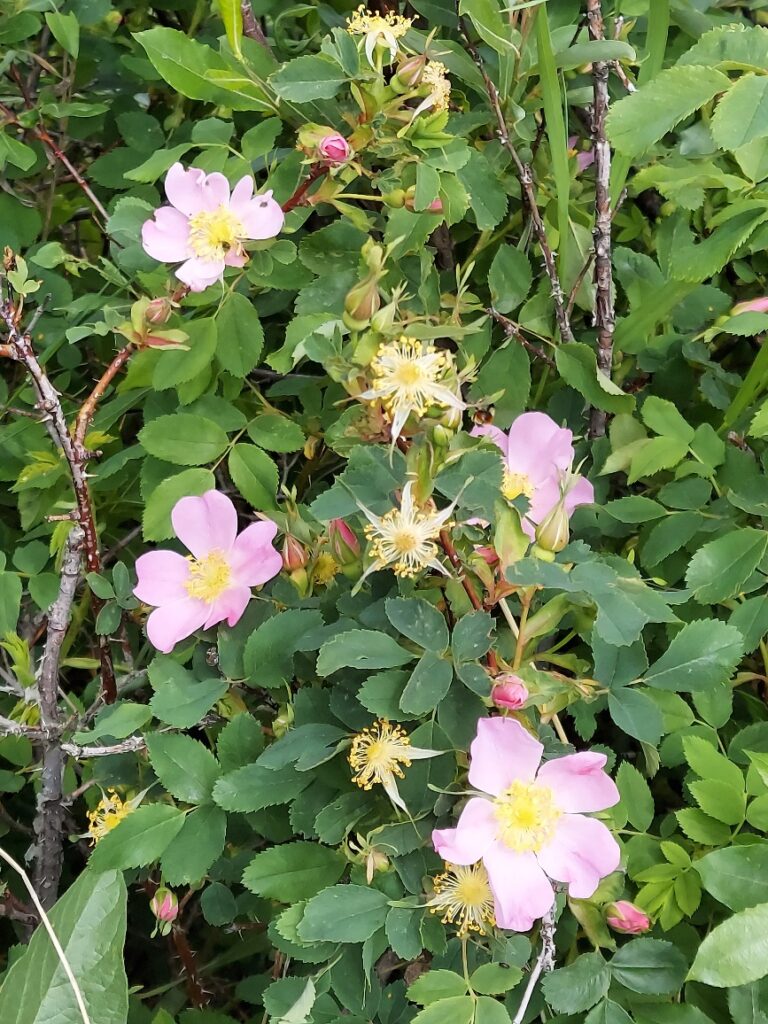
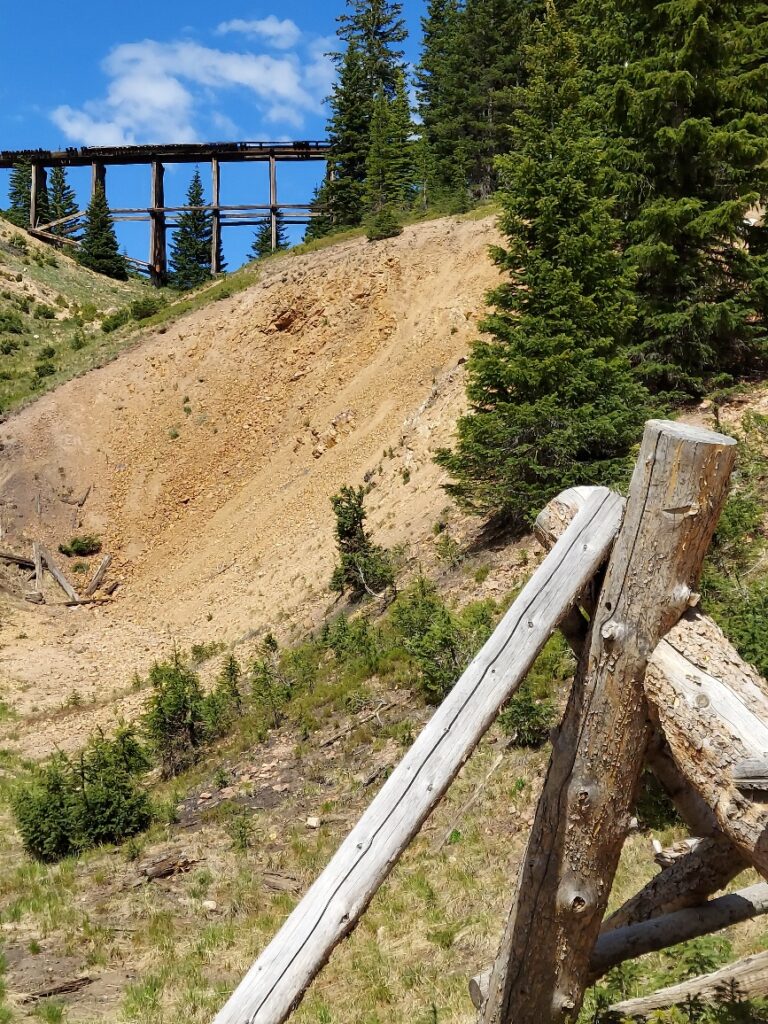
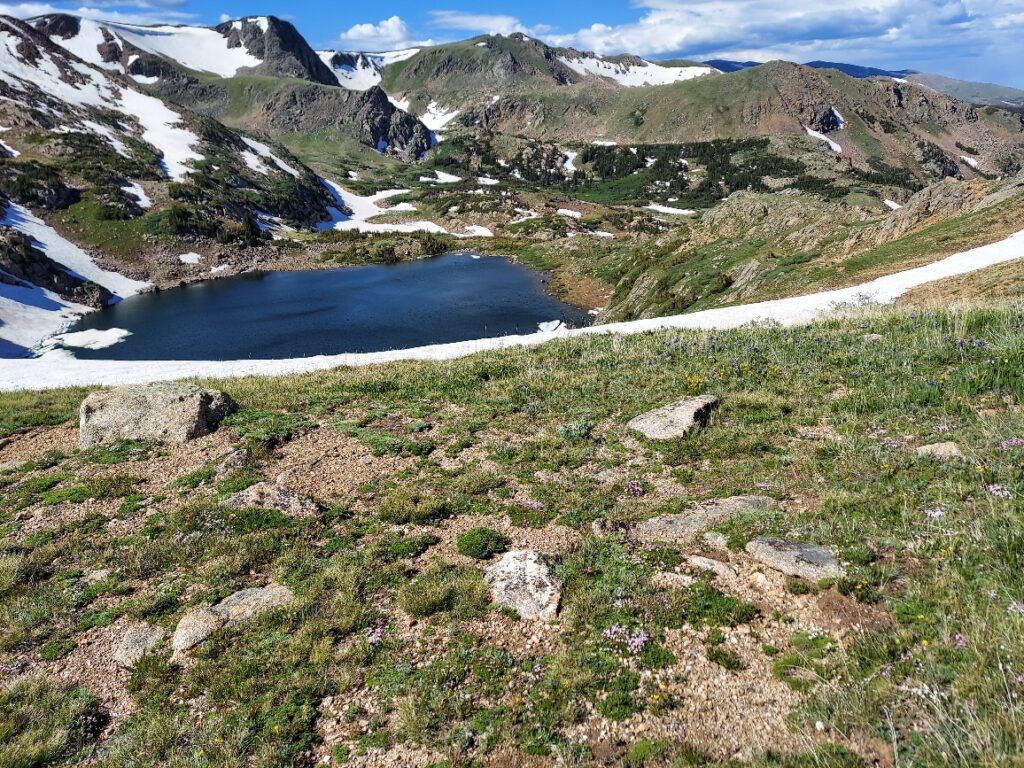
Weeks after our visit to the pass we made a visit to Central City and the Gilpin History Museum. A display provided us with a little more information about Corona. “This railroad station at the top of Rollins Pass was built around 1904. Snow on the pass drifts to 20 to 30 feet during the winter. A snow shed was built in 1909 to eliminate plowing the drifts. The Central City Weekly Register-Call reported on August 27, 1909 that the shed “. . . will require a million and a quarter feet” of lumber. When the Moffat Tunnel opened in 1928 the twenty-three miles of track over Rollins Pass was abandoned along with the structure.”
